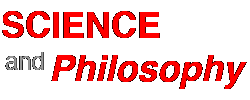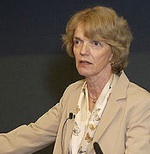Reading on: Neuroscience and consciousness
Churchland, Patricia Smith Brain-Wise: Studies in Neurophilosophy The MIT Press, Cambridge, MA 2002 [abridged – 750 words]
At this stage of our knowledge, none of the functions — attention, short-term memory, being awake, perceiving, imagining — can plausibly be equated with consciousness, but we are learning more about consciousness, bit by little bit, as scientific progress is made on each of the topics.
Is the analogy between the problem of being alive and the problem of consciousness a useful analogy? Let’s consider how it might be useful. What is it for something to be alive? The fundamental answer is now available in college biology courses. Modem cell biology, molecular biology, physiology, and evolutionary biology have discovered so much that a comprehensive, if not complete, story can now be told.
To be alive, cells need a cytoplasm containing structures such as mitochondria, to produce energy. They need the means of replication, such as DNA, along with microtubules to orchestrate cell division. They need protein-manufacturing apparatus, and so need ribosomes, enzymes, mRNA, tRNA, and DNA. They need specialized membranes, endoplasmic reticulum, lysosomes, and Golgi apparatus. At the end of the course, one would have, at least in outline, the scientific account of what it is for something to be alive.
A biology professor winding down the course at the end of the year, might hear this complaint: “I now understand all that, but you still have not explained to us what life itself is.” The reply is, roughly, that life is all that. You understand what is it for something to be alive when you understand the physical processes of metabolism, replication, protein building, and so forth. Once you know all that, there is no other phenomenon to be explained. Certainly, there are many questions still unanswered concerning how cells work, but these are questions such as “How does a transmembrane protein get inserted?” not questions such as “How does the life force get into the cell?”
Unconvinced, someone might persist, noting that textbook explanation really involve the interactions of dead stuff — ribosomes, microtubules, etc. — but what he wants to know is what living (being alive) itself is, what the essence of life is. Surely, it may be contested, being alive cannot emerge from mere dead stuff, no matter how it is arranged and organized.
The assumption behind this persistent question was a seriously debated hypothesis in the not very distant past.
By 1920, however, the assumption was already seriously behind the scientific times. The assumption, known as vitalism, is that things are alive because they are infused with the “life force” or “vital spirit” or “urge.” Vitalists are convinced that being alive cannot be a function of the dynamics and organization of dead molecules. Even as late as 1955, a few scientists still clung to the conviction that a nonphysical “urge” transforms a cell from a dead organization to a living organization.
Nevertheless, what modern biology has discovered is there is no vital spirit over and above a complex — really complex — organization of physical properties. The urge intuition takes a beating when the details of metabolism, protein production, membrane functions, and replication are understood. When you see how it all comes together, you see that no vital spirit is needed in the explanation. This is an example where the nonexistence of something is established as highly probable, not through a single experiment demonstrating its non-existence, but through acceptance of an explanatorily powerful framework that has no place for it.
Those who pursue the scientific approach to consciousness believe that developments analogous to those in the biology of “life” will allow us to understand consciousness. That is, we are beginning to understand the neurobiology of sleep, dreaming, attention, perception, emotions, drives, moods, autobiographical memory, perceptual imagery, motor control, motor imagery, and self-representation.
We are beginning to understand the neurobiology of what happens under various anesthetics, in a coma, in sub threshold perception, and in hallucinatory states. With more complete explanations of all, the nature of conscious phenomena should be understood, at least in a general way. Lots of detailed questions will remain, of course, but science is like that.
If, having understood all those functions, someone were to persist, “But what about consciousness itself. Consciousness cannot come out of non conscious physical stuff, no matter what its dynamics and organization,” we shall have to respond more or less as we do now with the vitalists. We go back through the relevant science all over again. If the objection under consideration assumes that consciousness cannot be a brain function because consciousness is a soulish thing, science may be up against dogmatism, as it was with vitalism circa 1950.


